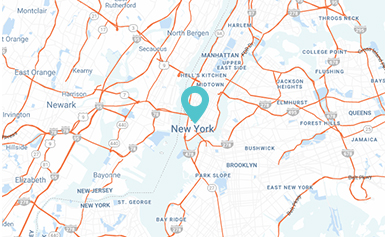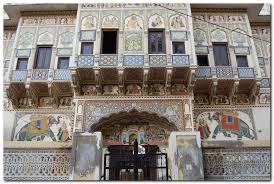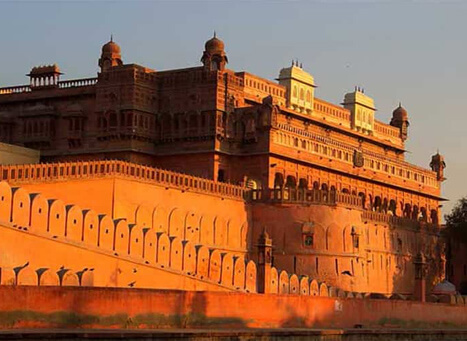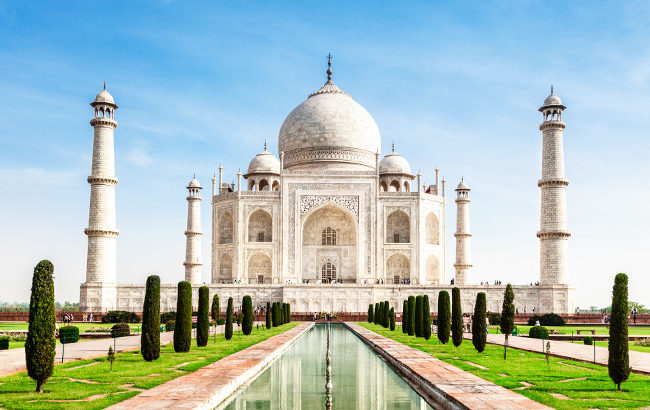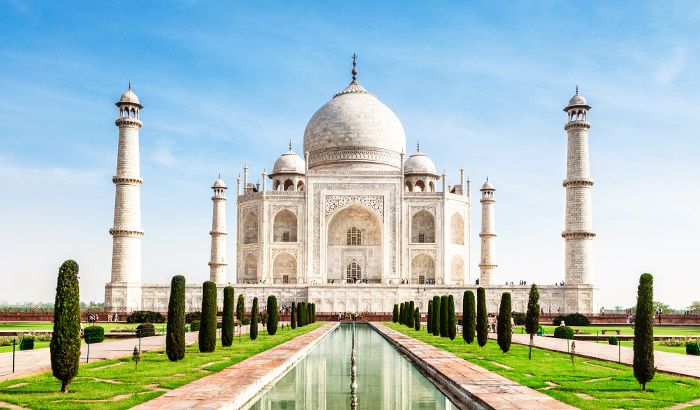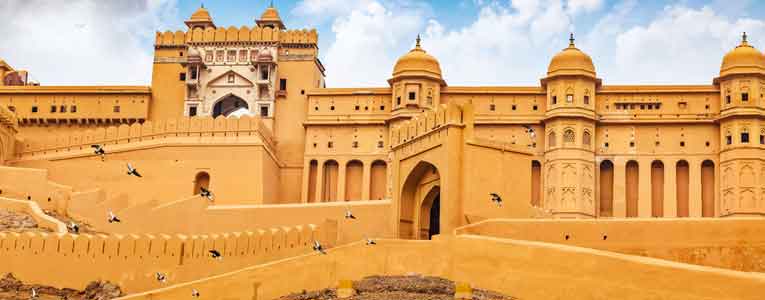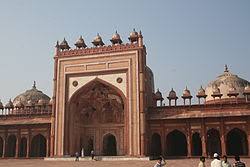Tour Plan
1
Day 01: Arrive Delhi.
Arrival at Delhi, you will be met by our TIME representative at airport, later transfer to the Hotel
Check-in at the hotel.
Delhi, the Empress of Indian cities has a fascinating history and a stimulating present. She has often been sacked and left naked and desolate. But she could not be despoiled of the incomparable situation that marks her for the metropolis of a Great Empire. The capital of India, Delhi has been the seat of power of a number of dynasties – the Rajputs, the Afghans, the Turks and the Mughals who continued their imperial line until the British. Scattered over are surviving ruins, remnants of mighty edifices, tombs of warriors and saints, which in an impressive sense of magnificence are memorials not of a single city but of supplanting nations.
Later in the afternoon proceed for the combined sightseeing of New & Old Delhi.
Photo stop at the great Red Fort, the 300-year-old walled city built by Emperor Shah Jehan in 1648 as his capital and named after him. The magnificent Red Fort built of red sandstone dates from the very peak of the Mughal power, Opposite the fort are the black and white onion dome and minarets of the Jama Masjid, the most elegant mosque in India. Drive past Kotla Firoz Shah, ruins of an old fort of the 14th century with the 13-meter-high Ashoka Pillar of 3rd BC. Visit Raj Ghat, where Mahatma Gandhi was cremated in 1948. Drive through the old city subject to traffic restrictions.
The new capital designed by Sir Edward Lutyens. Drive past the Presidential Palace, the Rashtrapati Bhavan and the secretariat buildings - the centre of all government activity and down the main avenue, the impressive Rajpath to the World War I memorial arch, the India Gate, the High Court Building and the Old Fort. Also visit the Qutub Minar, 72 meters high and the ruins of Quwat-UL-Islam (Light of Islam) Mosque. See Delhi’s most curious antique, the uncorroded Iron Pillar, which dates back Hundreds of Years.
Overnight in Delhi.
2
Day - 02: Delhi – Mandawa (250 Kms /06 hours)
Morning after breakfast drive to Mandawa. Mandawa, a remote feudal principality in the centre of the Shekhawati region, was a trading outpost for the ancient caravan routes that stopped here from China and the Middle East. The Rajput ruler of Mandawa, Thakur Nawal Singh, built a fort in 1755 to protect this outpost. That the township grew around the fort soon attracted a large community of traders, who settled here. When the caravan traffic ceased in the late 18th century, the traders created business empires in other parts of the country, but returned to Mandawa to build palatial mansions in their hometown.
Overnight in Mandawa
3
Day – 03: Mandawa - Bikaner (195 Kms / 02-03 hours)
Morning after breakfast sightseeing of Mandawa visiting the frescoes & Havelis of Mandawa.
Later drive to Bikaner. On arrival check in at hotel. Balance day at leisure.
Overnight in Bikaner.
4
Day - 04: Bikaner – Jaipur (335 Kms / 06-07 hours)
Morning after breakfast, proceed for the sightseeing of Bikaner.
Visit the Junagarh Fort, one of the finest of Rajput monuments. Paved courtyards, narrow staircases and terraces in this Rathore stronghold connect all thirty-seven palaces, pavilions and beautiful Jain temples built by different kings. One must take particular note of the designed ceilings of the various homes in this region - done either in wood, or copper plates, which are then covered with intricate painting work.
Later drive to jaipur.
Jaipur is where the enduring charisma of the past blends with the throbbing vitality of today. Where a colourful cast of characters – from printers and potters to artists and antique dealers - present a fascinating picture of a city that is alive to both tradition and change. Raja Jai Singh, the founder of Jaipur was no ordinary man. He was a scholar and an astronomer, keenly sensitive to beauty, a formidable general, who tempered power with wisdom. In building Jaipur, Jai Singh's vision took him beyond architectural beauty for in the sprawling, barren plains beneath Amber, the former capital; he gave India its first planned city, which has remained unique in two and a half centuries. Jai Singh made Jaipur a haven and it became a centre of commerce and religion.
Overnight in Jaipur.
5
Day 05: In Jaipur
Morning after breakfast, proceed for the visit to Amber Fort.
Amber fort: This magnificent fort comprises an extensive palace complex, built from pale yellow and pink sandstone, and white marble, and is divided into four main sections, each with its own courtyard. Visit the fort via Elephants failing 4x4 Vehicle.
City Palace, a delightful blend of Mughal and traditional Rajasthani architecture, the City Palace sprawls over one-seventh of the area in the walled city. It houses the Chandra Mahal, Shri Govind Dev Temple and the City Palace Museum.
Jantar Mantar is the largest and the best preserved of the five observatories built by Jai Singh II in different parts of the country. This observatory consisting of outsized astronomical instruments is still in use.
Hawa Mahal, the ornamental facade of this "Palace of Winds" is a prominent landmark in Jaipur. It is a five-storey structure of sandstone plastered pink encrusted with fine trelliswork and elaborate balconies. The palace has 953 niches and windows. Built in 1799 by Pratap Singh, the Mahal was a royal grandstand for the palace women.
Overnight in Jaipur.
6
Day 06: Jaipur – Agra enroute Fatehpur Sikri (250 kms. / 5 hrs.)
Morning after breakfast, drive to Agra, enroute Fatehpur Sikri.
35kms outside Agra is Fatehpur Sikri, the abandoned red sandstone city built in the 16th century by the Mughal Emperor Akbar, one of India's greatest rulers. Remarkably broadminded for his time, this Muslim king married a Rajput princess in order to win over his Hindu subjects. The architecture of Fatehpur Sikri is a combination of Hindu and Muslim styles, expressing Akbar's vision of synthesizing the cultures.
Later continue drive to Agra. On arrival check-in at the hotel.
Agra, the city known for the famous monument of love - the Taj Mahal. The Mughal Emperor, Shah Jehan, constructed Taj Mahal. It is said he built this monument in the memory of his beloved wife Mumtaj Mahal. The Taj Mahal is ethereal at any part of day, blushing in the rosy glow of dawn or sunset, appearing like a pearly mirage in moonlight or reflected in the pools of the garden. Perhaps the most moving view of Taj is from an octagonal tower in the Agra Fort further along the river Yamuna. There are very few cities in the world that can match the history and heritage of Agra. Located at a distance of 204 km south of Delhi, Agra is the single most famous tourist destination of India. Situated on the west bank of River Yamuna, Agra is a part of the great Norther Indian plains. The architectural splendor of the city is reflected in the glorious monuments of medieval India built by great Mughals who ruled India for more than 300 years. In the mid-16th century and earlier 17th century Agra witnessed a frenzied building activity and it was during this time when the symbol of love Taj Mahal was built. The buildings made during this era were purely in the contemporary Mughal style and of very high quality, which is still reflected in whatever monuments remain in Agra.
Overnight in Agra
7
Day 07: Agra - Delhi (210 kms. / 4hrs.)
Morning after breakfast visit to Taj Mahal & Agra Fort.
Taj Mahal (Closed on Friday) with its incredible lacy white grandeur the Taj Mahal is perhaps the most perfect architectural monument in the world. To the poet Tagore it was a tear on the face of eternity'. In memory of his wife the great Mughal emperor Shah Jehan constructed this most extravagant and incomparable monument built for love. Amazingly graceful from any angle, it is the close-up detail, which is really astounding.
Agra Fort is situated on the banks of the river Yamuna, another monumental mission accomplished by the great Mughal visionary Emperor Akbar. His son Jehangir and grandson, Shah Jahan added to this imposing structure during their rule. The palaces, mosques and audience halls contained within its massive wall of red sandstone are perfect examples of blending Islamic and Hindu traditions.
Later drive to Delhi.
Overnight in Delhi.
8
Day 09: Leave Delhi
In time transfer to the international airport to connect flight to onward destination.
Tour Location
INDIA – DELHI – MANDAWA – BIKANER – JAIPUR -AGRA – DELHI


